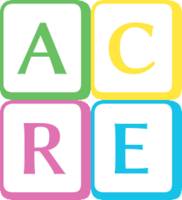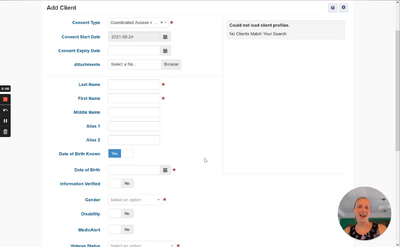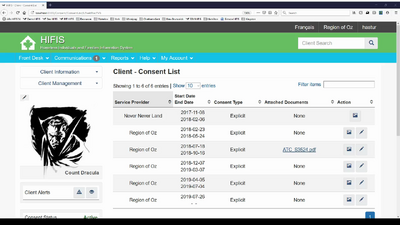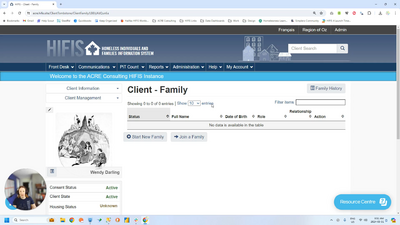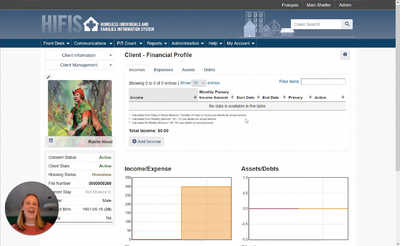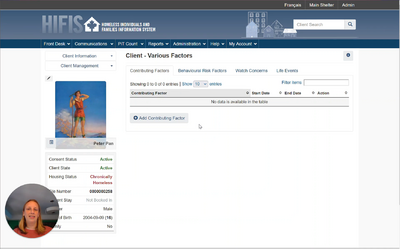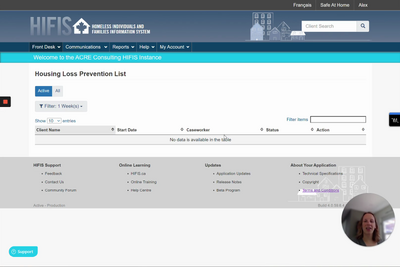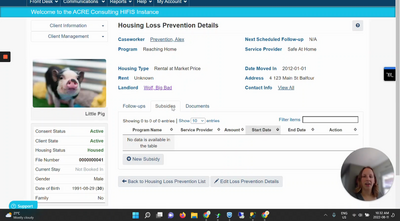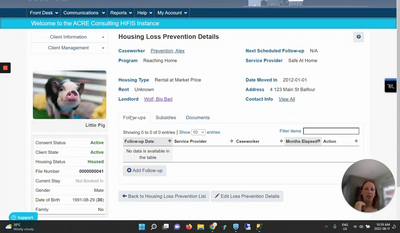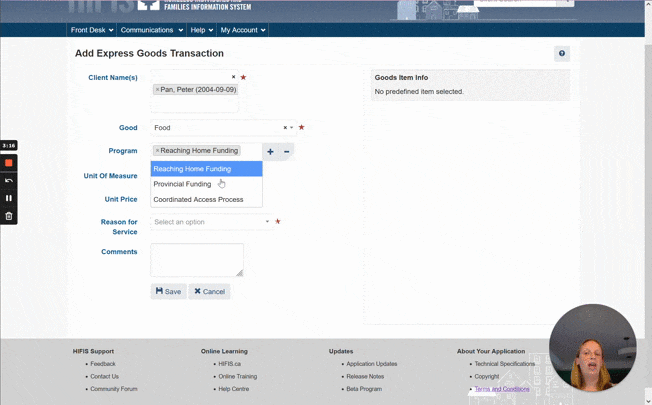
Housing Support & Case Management Training
This course provides standard training for Housing Support & Case Management Workers in Nova Scotia + PEI. In 3.5 hours of content, it covers: adding clients, consent, families, and other client information; case management; the housing search process; housing loss prevention; SPDAT assessments; goods, and financial assistance.
The Consent module is used to record any consent given or denied by the client related to service provider services. You can indicate if the consent was given, at which date and even attach signed documents.
The Family module is used to keep track of a client’s family members and the role each member has in the family. Family roles include dependant, family head and partner. When a client is linked to a family, they can be managed as a family unit for certain activities, such as book ins.
The Housing History module is used to keep track of the client’s past and present housing situation.
The Financial Profile module allows users to help clients manage their finances by tracking their income, expenses, assets and debts. Once values are added, visual representations of the client’s financial profile will appear.
The Service Prioritization Decision Assistance Tool (SPDAT) was developed as an assessment tool for frontline workers at agencies that work with homeless clients to prioritize which of those clients should receive assistance first.
The Case Management module allows the service provider to keep records of the activities done with a client to reach pre-determined goals. Each goal (desired outcome) that a caseworker and client work towards is a separate record in the Case Management module. For example, if a client has a mental health issue they would like to work on and would also like to find employment, two Case Management records would be created for the client.
The Housing Placement module covers a client's housing search process from the time they are assigned to a case manager through to the time that they are housed and no longer requiring supports.
The Housing Loss Prevention module allows a case manager to issue housing subsidies and follow-up with the client.
The Diversion module is used to record when you attempt to find a more suitable shelter alternative for a client.
Goods & Services offer ways for staff to record that they provided clients with tangible Goods or helpful Services that are not connected to an overall case plan.
